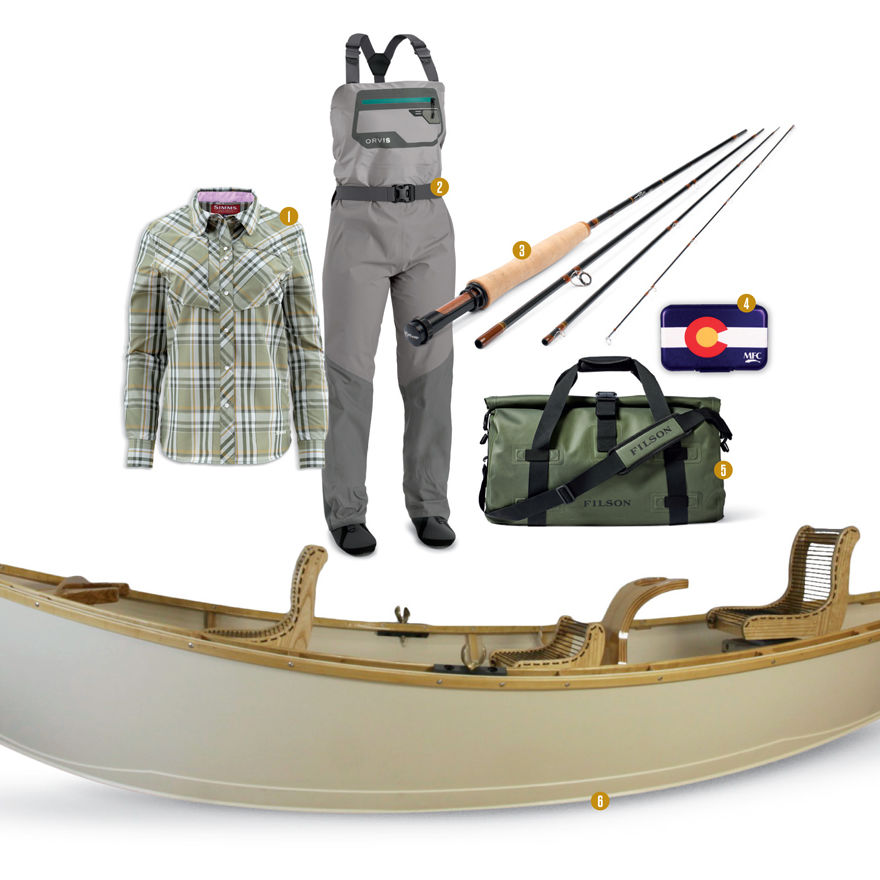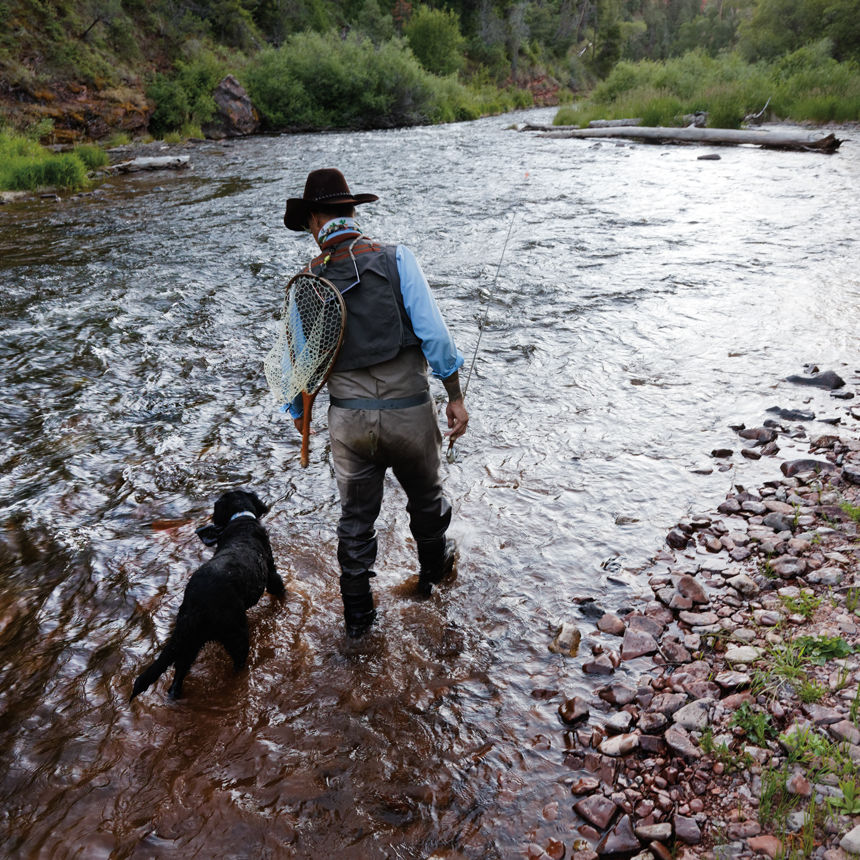Aspen's Four Area Rivers Offer World-Class Angling
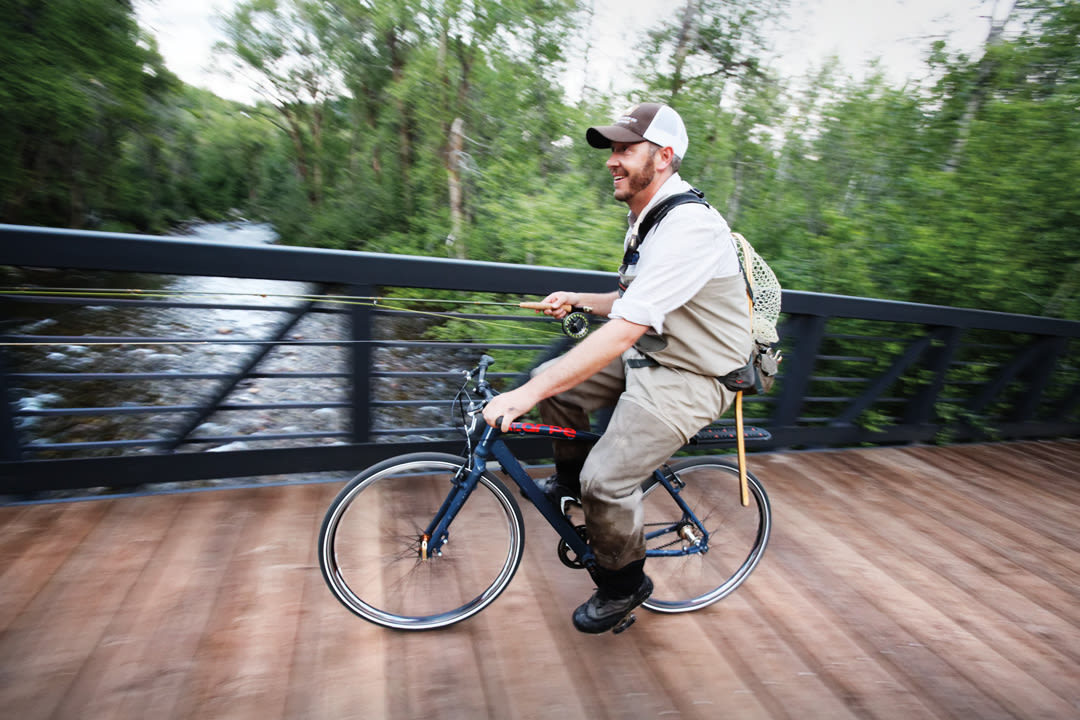
Jarrod Hollinger pedals the Rio Grande Trail along the Roaring Fork River in Aspen.
Image: Ross Kribbs
Lunkerville
Fryingpan River below Ruedi Dam
Colorado’s fattest brown trout inhabit the two miles of the Fryingpan below the dam. Some reach 8 pounds or more by hoovering the Mysis shrimp spilling out of Ruedi Reservoir. Scan the calm, clear waters of the Flats below the dam, and you’ll see stacks of arm-length fish: A recent Colorado Parks and Wildlife survey found 84 browns and 47 rainbows measuring more than 14 inches—so this fishery still deserves its legendary reputation. And with the rich red cliffs of the Maroon Formation rising above the banks, it’s pretty, to boot.
But hooking these fish—let alone landing one—is notoriously difficult. They’re extremely leader-shy and will avoid any kind of visible flash from the line. Increase your odds by using superfine, 6X fluorocarbon tippet. Overcast skies or pre-dawn mornings make it harder for fish to spot your rig—and easier to fool them. Cast midge nymphs into the Toilet Bowl, where food-rich water swirls out of the dam and attracts the river’s biggest specimens. Or, if midges or blue-winged olive mayflies are hatching, head just downstream to Baetis Bridge to tempt a fatty to the surface.
No Name Fun
Colorado River above Glenwood Springs
Most anglers opt to float the Colorado River, since its big water makes wading difficult. The 11 miles between Grizzly Creek and South Canyon (a popular all-day float) hold plenty of rainbow and brown trout, as well as mountain whitefish—and because they see less angling pressure than the Fryingpan and Roaring Fork rivers, these fish are more gullible.
No boat? Park at No Name Rest Area (off I-70, 2 miles east of Glenwood Springs), and walk upstream along the paved Glenwood Canyon Bike Path, which parallels the river and visits several swirling eddies where you can toss in a stonefly nymph or drag a streamer through the current. Productive streamer patterns include wooly buggers, sculpin, and autumn splendors—invented by Roaring Fork guide Tim Heng, this never-fail lure looks like a wooly bugger but has wiggly rubber legs that look irresistible to area trout. And with the canyon’s striated stone spires for a backdrop, trophy photos look particularly dazzling from the Colorado River.
Aspen’s Wild Backyard
Rio Grande Trail along the Upper Roaring Fork River
You don’t have to drive far from Aspen to find stellar fishing. The Roaring Fork rolls right alongside Aspen’s homes and parks, and provides outstanding Wild Trout Water within walking distance of downtown. Start at the John Denver Sanctuary and cast into the pools behind this stretch’s big boulders. Then walk downstream on the paved Rio Grande Trail to access more pocket water.
The eight-mile section between Aspen and Woody Creek is chockablock with trout, so to cover more ground, try stashing your fishing gear in a backpack and pedaling a bike between tempting holes. The gentle gradients create calm pools and reasonably easy wading in most spots, and arcing tree branches along the stream provide shady places to snack—or enjoy a riverside siesta.
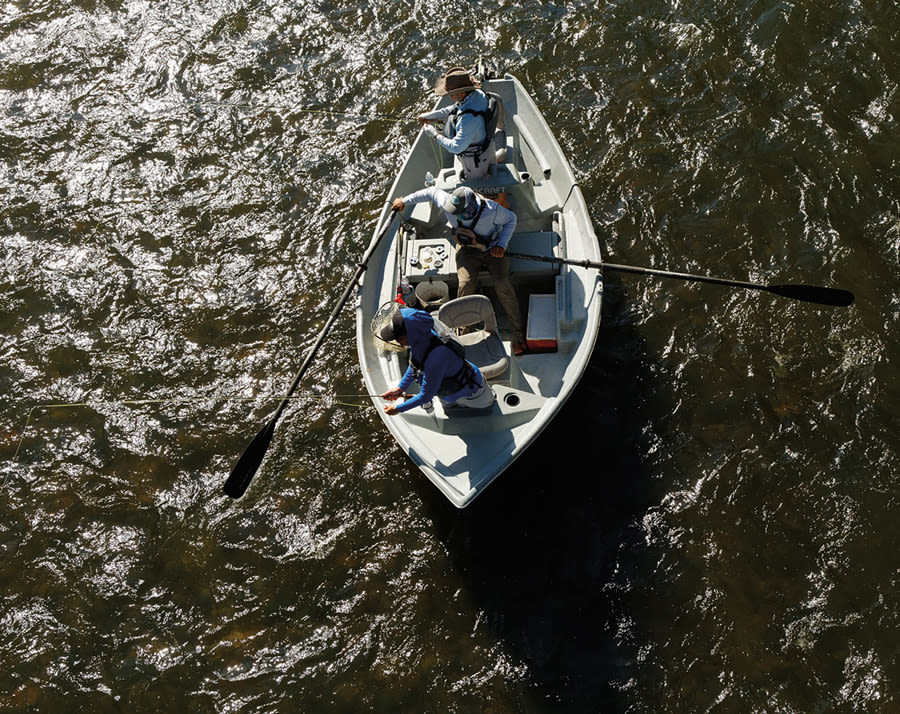
Floating the Roaring Fork River
Image: Ross Kribbs
Float the Fork
Lower Roaring Fork River
By the time the freestone Roaring Fork River reaches Basalt, it’s become big water, hitting 5,900 cubic feet per second during average spring runoff in May and June—the only time that the technical section between Basalt and Carbondale is floatable. The stretch from Carbondale to Westbank (8 miles) or Glenwood Springs (14 miles) is more reliable and is the summer’s go-to run for many local anglers. Put in at the boat ramp just downvalley of where Highways 82 and 133 meet; turn left on the frontage road (County Rd 106) about 1 mile past the intersection to access the ramp.
The appeal? Variety. Everything from green drake nymphs to streamers to dry flies to terrestrials can tempt this river’s trout. In June, once runoff subsides, fish gobble big, meaty caddis and other large imitations floated on the surface, and heavy hatches of yellow sallies and pale morning duns offer opportunities to watch a big, hook-jawed brown trout gobble a dry fly off the surface. On July evenings during this river’s beloved green drake hatch, fishing guides float this section for an after-hours party that doesn’t dwindle until dark.
Undiscovered Gem
Crystal River above Carbondale
Few of the valley’s visitors ever make their way to the Crystal River, a freestone stream that tumbles out of the Elk Mountains to join the Roaring Fork at Carbondale. Its fish are fewer (and smaller) than the ones anglers pursue on the other, more famous rivers of the Roaring Fork region. But they’re lively eaters—which explains why, on many summer afternoons, you’ll see locals from Carbondale and other area towns parking at the Crystal River Hatchery off Highway 133 after work and fishing up- and downstream of the bridge.
For a more backcountry feel, drive upstream beyond Redstone and park in one of the pull-offs to fish this river’s glimmering riffles and undercut banks. Gravel beaches along the stream make fine picnic sites. And although the fish here only measure 6 to 12 inches, on average, they’re diverse. Aim for a Colorado grand slam of cutthroat, brown, rainbow, and brook trout.
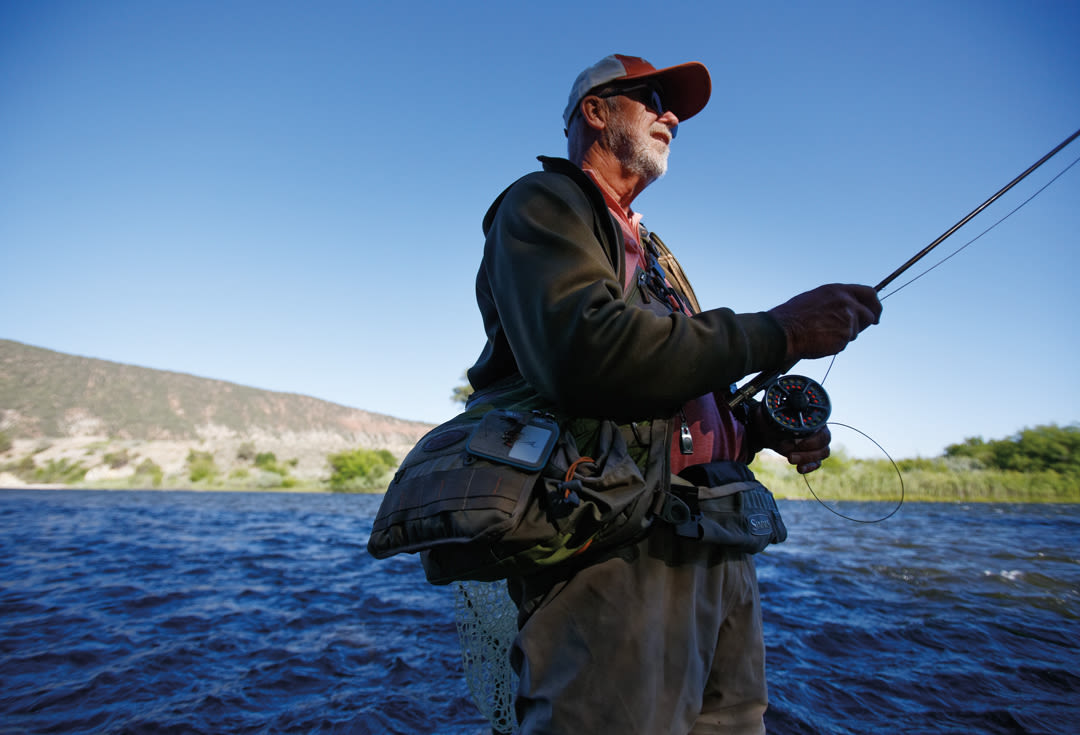
Tim Heng on a surprisingly wild section of the lower Roaring Fork between Carbondale and Glenwood Springs
Image: Ross Kribbs
Ice, Out
Catching Too Many Fish Made One Guide Call Uncle
“I was guiding on the Fryingpan one winter day about 12 years ago. It was very cold, maybe 10 or 20 degrees Fahrenheit with a breeze. But we were on the Bend Pool, about 100 yards down from the outlet of the dam, and the fishing was very good. My client was catching fish on every other cast, and for nearly an hour, I was handling and releasing a lot of fish for him. My hands got so brutally cold that I didn’t want him to catch fish anymore. So I moved him up to a spot where he wasn’t likely to catch anything. He realized what I was doing, though he didn’t tell me that until the end of the day, once we were back at the shop. But he didn’t seem to mind. It’s just such an incredible winter fishery.”
—Tim Heng, longtime fishing guide and fly designer
